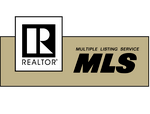Buying a home for the first time can be a frustrating, sometimes frightening process for many people.
Every day our agents get calls from people who are interested in buying a home. Sometimes it’s just that they are tired of “throwing their money away” on rent, or that they feel they’ve outgrown the space they are living in and are ready for a home of their own. I encourage my clients to follow their dream of home ownership.
The first, most important step in buying a home is to meet with a lender. I’d encourage you to meet with several, in fact. Learn about what their banks can offer and see which one you feel can do the most to help you in your pursuit of homeownership. Ask them about their interest rates, the types of loans they offer, and what the down payment amounts on those different loans are. (More on down payments in a moment.) You will need to get preapproved with at least one of them, find out your credit score, and determine how much house you can buy. If you don’t know any lenders, or want to meet other lenders to compare prices, don’t be afraid to ask! We are here to not only help you find that first home, but to guide you through the entire process of buying a home.
 It’s a good idea when talking with a lender to understand the monthly payment. Does it include an escrow account, where the bank charges a little extra and holds that money to pay your home insurance and taxes for you every year? Make sure you aim for a payment amount that you can manage comfortably. If you are approved for $200,000, that doesn’t mean you have to buy a $200,000 home. You may find a home in the $150,000 range that you like better and is more manageable in your budget. If you are planning to ask the seller to pay part of your closing costs or to give you a paint allowance to change the colors of the walls, you’ll have less negotiation room if you’re at the top of your price point.
It’s a good idea when talking with a lender to understand the monthly payment. Does it include an escrow account, where the bank charges a little extra and holds that money to pay your home insurance and taxes for you every year? Make sure you aim for a payment amount that you can manage comfortably. If you are approved for $200,000, that doesn’t mean you have to buy a $200,000 home. You may find a home in the $150,000 range that you like better and is more manageable in your budget. If you are planning to ask the seller to pay part of your closing costs or to give you a paint allowance to change the colors of the walls, you’ll have less negotiation room if you’re at the top of your price point.
Make sure you understand what’s expected of you up front – the down payment amount, closing costs, inspections and appraisals, all of these expenses are things you will need to make sure you can cover comfortably. Don’t wipe out your savings account on these expenses, especially the inspections and appraisal. If the home inspection comes back with problems that aren’t easily resolved, you want to make sure you have enough for another inspection on a different house. Most of the time, home inspections are to let the buyers know what expenses they will have to negotiate to get fixed or help with pre-planning for when they own the home, but some of the time they do uncover big challenges that make the purchase too costly.
If you cannot afford the down payment, you should seriously consider holding off buying a home. It is difficult to purchase a home when you have little to nothing to put down. Your interest rates can increase, causing you to pay much more than the home is worth. Conventional loans see down payments of 20 percent, but some loan programs allow buyers to put down far less, as little as 3.5 percent. Make sure you talk with the lender about the down payment and the monthly payments on the different programs, and know what the interest rates are for those loans.
Regarding pre-planning, you’ll also want to set aside money for things like moving expenses, possible repairs, or changes to the home (remember to wait to make big purchases like new furniture or appliances until the home purchase is done!). It can take between 30 and 60 days to complete the closing process on a home, so patience is king.
Some other important tips – don’t open a new credit card, make large purchases, or change jobs during the process of buying a home. These things can affect your credit score and ultimately lower the loan amount you will be approved for. This mistake is so common, but so easily avoidable. In a blink of an eye, a potential home buyer becomes ineligible for the home they were set on due to one of these choices.
And remember, while you’re looking for your new home to let go of the little things. Don’t get caught up in fixtures, paint colors, or the other things that can easily be changed. Instead make a list of the things that are most important to you in your home, such as the square footage, the number of bedrooms or bathrooms, the floor plan, etc. Is the driveway too steep? Did the house only have one bathroom but there are six family members moving in with you? These things might be deal breakers but paint color shouldn’t be!
Lastly, pay attention to the neighborhood. Research it online. Map your routes to the places that matter to you. If you love to go bowling every Friday night, don’t wait until after you’ve bought the house to find out the bowling alley is 45 minutes away. You (hopefully) will be living in your new home for quite some time. You will want to make sure that you are in a neighborhood that meets your needs.







